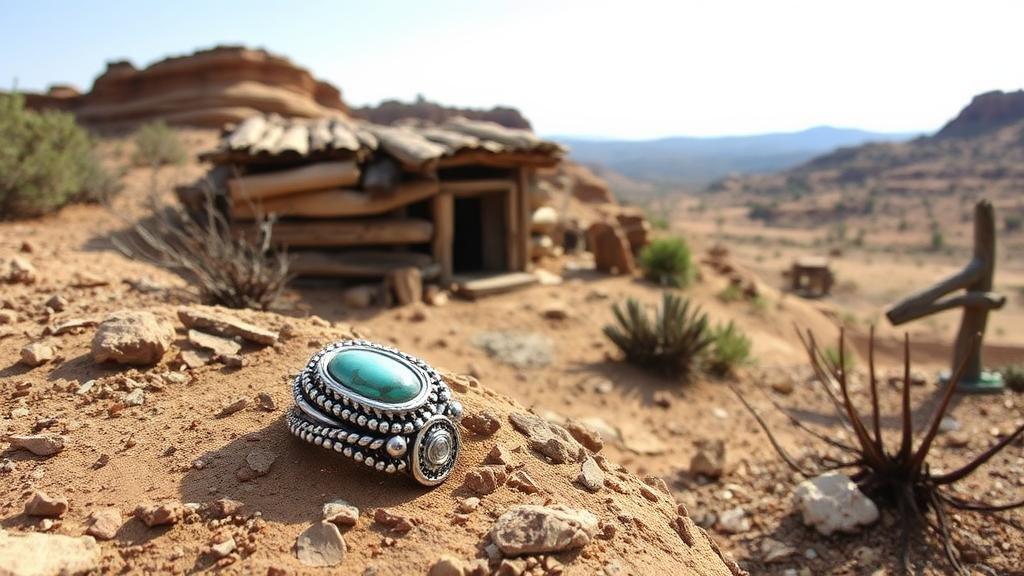Unearthing Silver Jewelry in Deserted Canyon Settlements
Unearthing Silver Jewelry in Deserted Canyon Settlements
The discovery of silver jewelry in deserted canyon settlements provides a fascinating glimpse into the cultural and economic aspects of ancient societies. This article explores the historical significance, excavation methods, and the implications of finding silver artifacts in these remote locations.
The Historical Context of Silver Jewelry
Silver has been a highly valued metal throughout human history, prized for both its beauty and its practical applications. In many ancient cultures, silver was used in jewelry to signify wealth, status, and craftsmanship. emergence of silver jewelry in canyon settlements occurred during periods of trade and cultural exchange, particularly among indigenous peoples of the Americas and later European settlers.
One notable example is the ancient Pueblo peoples of the Southwestern United States, who were known for their intricate metalwork. Archaeological findings indicate that during the 12th century, these communities began incorporating silver into their decorative practices, influenced largely by Spanish colonizers. This interplay of cultures resulted in a unique fusion reflected in the jewelry unearthed in deserted canyon settings.
Unearthing silver jewelry in deserted canyon settlements involves sophisticated archaeological methods. e techniques are crucial for ensuring the preservation of artifacts while providing insights into past cultures.
- Site Surveying: Before excavation begins, archaeologists conduct extensive site surveys to identify potential locations. This can include examining historical documentation and previous archaeological findings to ascertain areas where silver jewelry might be located.
- Stratigraphic Excavation: This method involves digging in layers, allowing researchers to maintain the context of each artifact. By understanding the stratigraphy, they can determine the relative dating of the silver jewelry and its association with other cultural materials.
- Field Conservation: The handling of silver artifacts during excavation requires special care to prevent deterioration. Archaeologists often employ field conservation techniques, such as the use of protective coatings to stabilize fragile items before they are transported to a laboratory.
Case Studies: Significant Discoveries
Several significant discoveries of silver jewelry have provided valuable insight into ancient settlements in desert canyons. One standout case is the discovery of silver artifacts in the Mesa Verde region of Colorado. Archaeologists found a variety of silver jewelry, including bracelets and pendants, dating back to the late 1200s. This evidence suggests not only advanced metallurgical skills but also a complex social structure that valued craftsmanship and trade.
Another important site is the Chaco Culture National Historical Park, where silver and turquoise jewelry was found alongside remnants of ceremonial structures. These findings highlight the cultural and spiritual significance of silver items, suggesting they were not only decorative but also played a role in religious practices.
The Implications of Discoveries
Uncovering silver jewelry in deserted canyon settlements raises important questions regarding the social, economic, and cultural dynamics of past societies. First, it sheds light on trade networks that existed long before modern commerce. presence of silver artifacts often indicates interactions between different cultural groups, suggesting that ancient peoples were adept at forging alliances and exchanging goods.
Plus, these discoveries challenge simplistic narratives about isolated communities. Instead, they illustrate how even remote settlements were part of broader socio-economic entanglements. Analyzing these artifacts can provide insights into the values and lifestyles of the people who created them, as well as their responses to environmental and social changes over time.
Conclusion: Actionable Takeaways for Future Archaeology
The study of silver jewelry found in deserted canyon settlements is a rich field that combines history, archaeology, and anthropology. As researchers continue to uncover these artifacts, several actionable takeaways can enhance future archaeological endeavors:
- Invest in advanced archaeological training to equip teams with the latest excavation and conservation techniques.
- Collaborate with indigenous communities to gain insights into the cultural significance of the findings, which may enhance interpretation and preservation efforts.
- Use modern technology, such as ground-penetrating radar and digital mapping, to improve site surveys and excavations.
To wrap up, as we unearth silver jewelry from deserted canyon settlements, we not only recover material objects but also reconstruct the narratives of the people who once inhabited these lands. Continued research and excavation can further bridge the gap between past and present, allowing us to appreciate the rich tapestry of human history.


